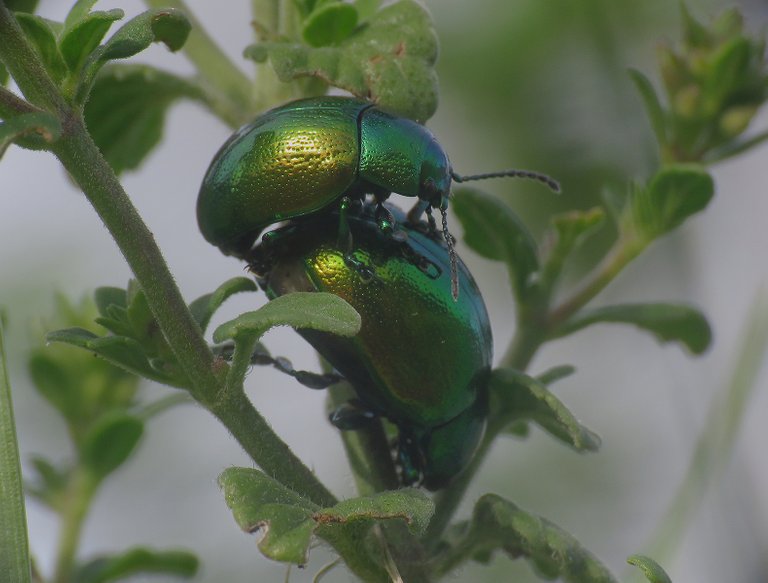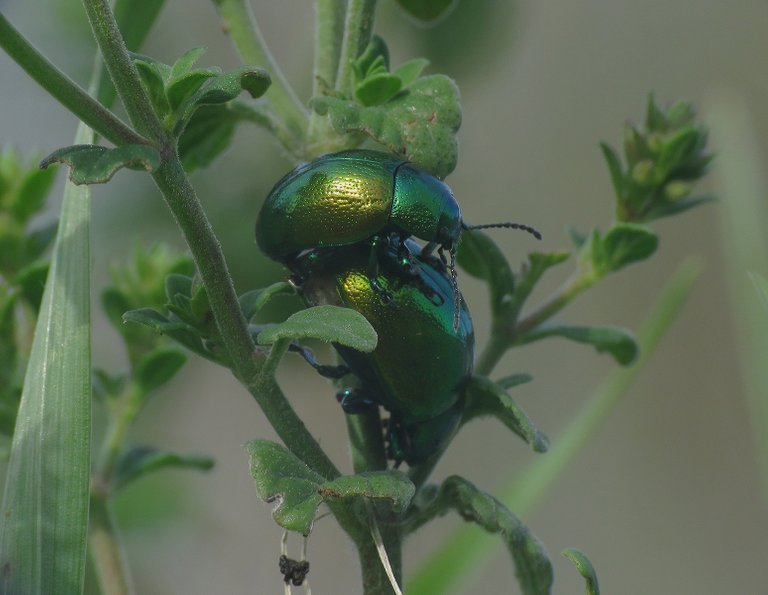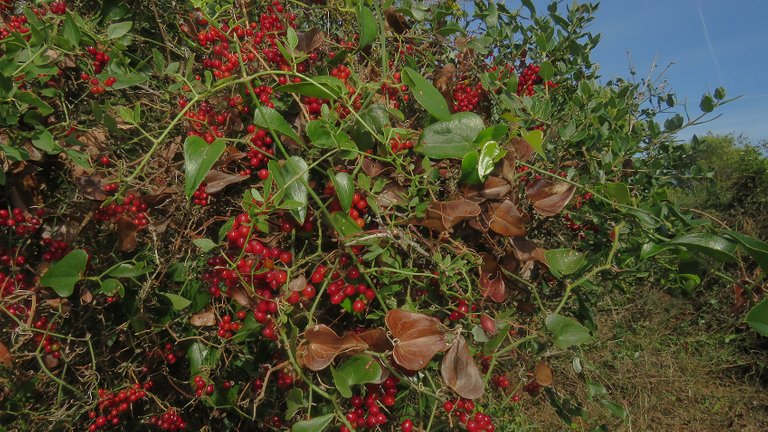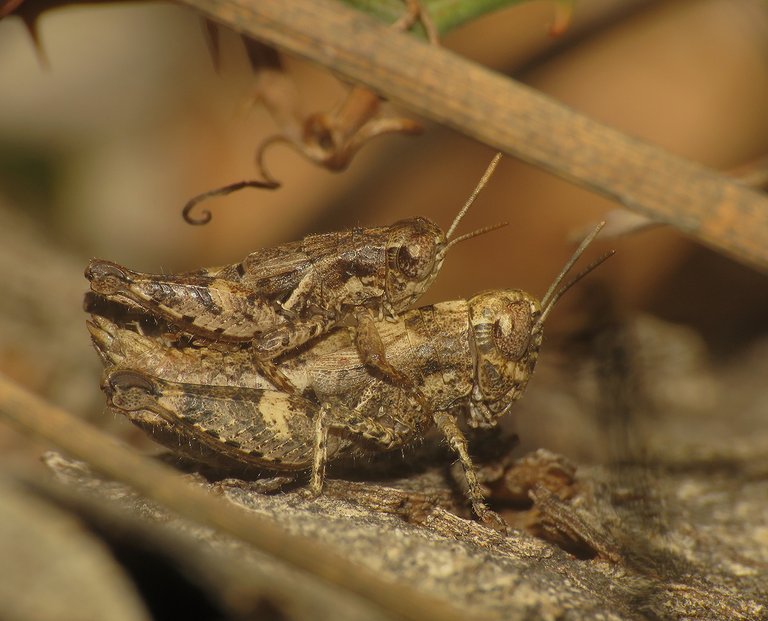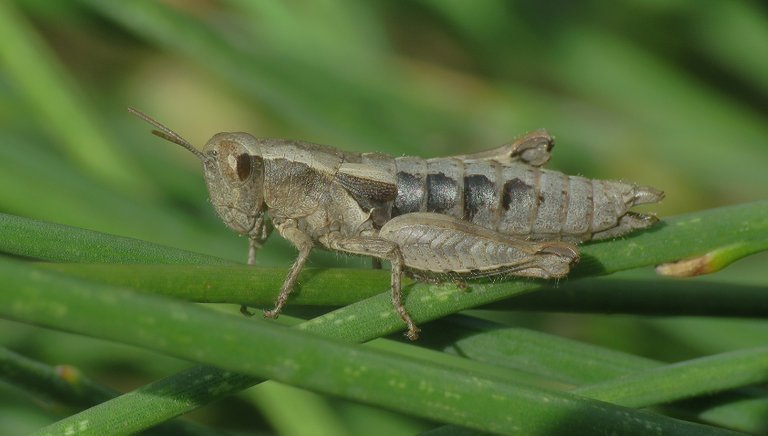Two months ago, on the 4th of October this year, I spent some time, a couple of hours or so, rambling around the area between Medulin, my hometown, and Liznjan, the nearest village that got almost connected with Medulin during the last decade. In this post, you'll see some plants, insects, and mushrooms that I encountered along the way.
In this opening photograph, you can see a bunch of southern daisies (Bellis sylvestris) that grew on the edge of the meadow, near the first line of pine trees that form a small shady grove between two open, sunny areas. The flowers are in the sunlight while the rest of the scene, except for the small chunk of the distant background, is in the shade, creating a sensation of depth that, along with the low angle, makes this potentially very dull wide shot, fairly attractive.
Here you can see two shiny little jewels ...

... that were mating among the leaves and flowers ...
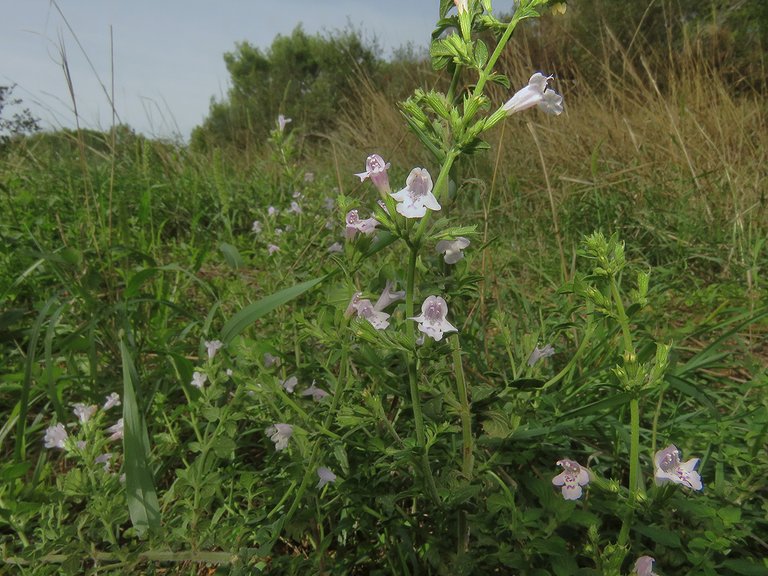
... of the Clinopodium nepeta plant.

These are the Chrysolina herbacea, leaf beetles from the large, varied ...

... and often very colorful Chrysomelidae family. Chrysolina herbacea is commonly known as the mint leaf beetle or green mint beetle ...
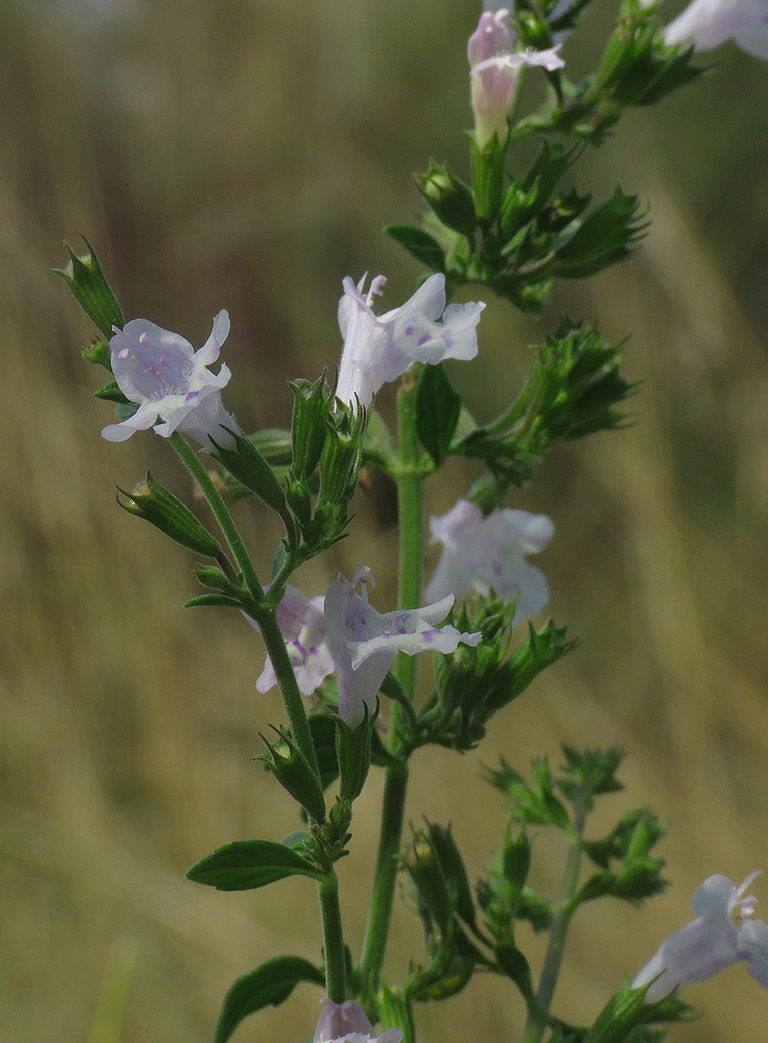
... and Clinopodium nepeta is an aromatic plant from the Lamiaceae family ...
... a family that includes a wide variety of mint.
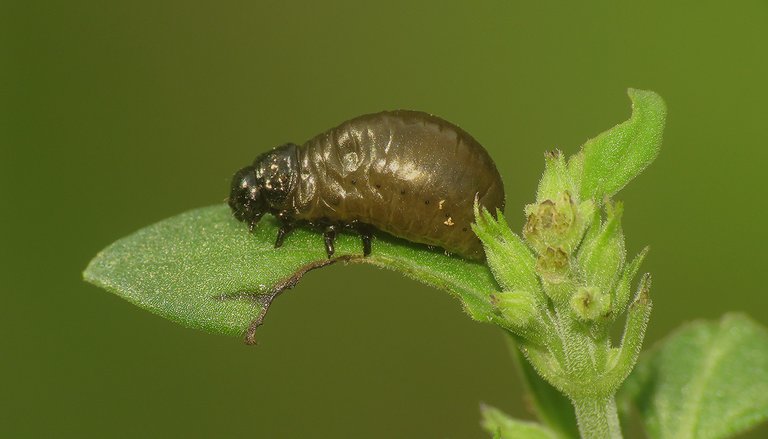
Besides the adult beetles, I found a bunch of Chrysolina herbacea larvae while exploring the Clinopodium nepeta plants. Both adults and larvae feed on the leaves of mint and some other closely related plants.
All the adults I encountered on the 4th of October were working on reproduction.
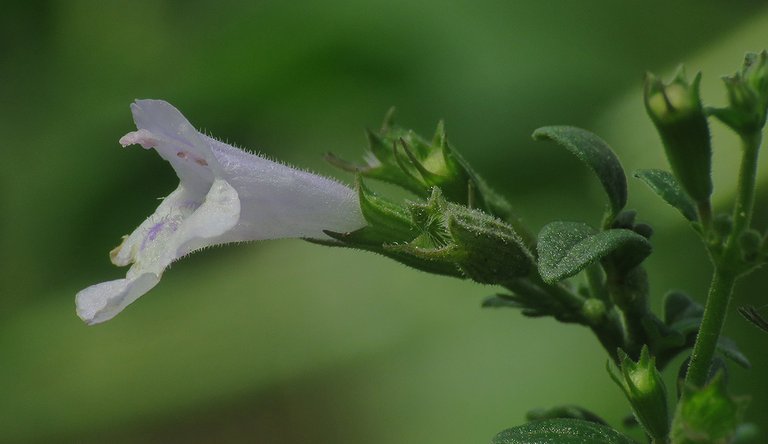
Here you can see a portrait of one single Clinopodium nepeta flower. In the following photograph ...
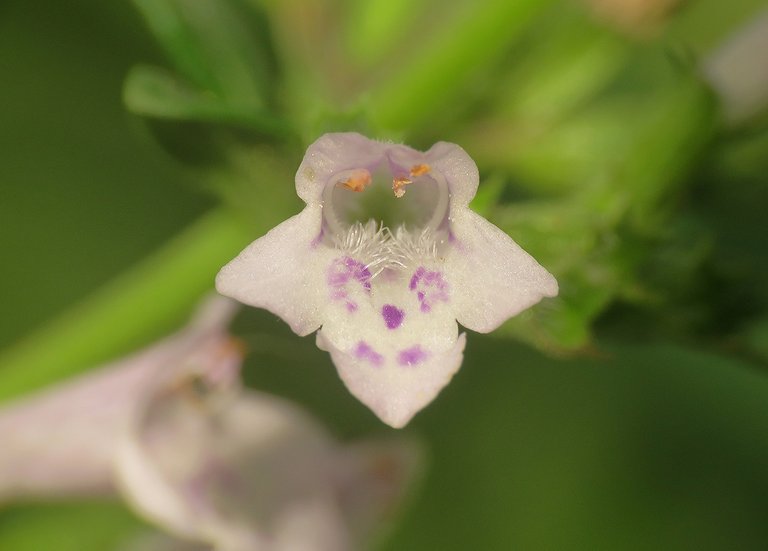
... you can see the same kind of flower, but from a different angle.
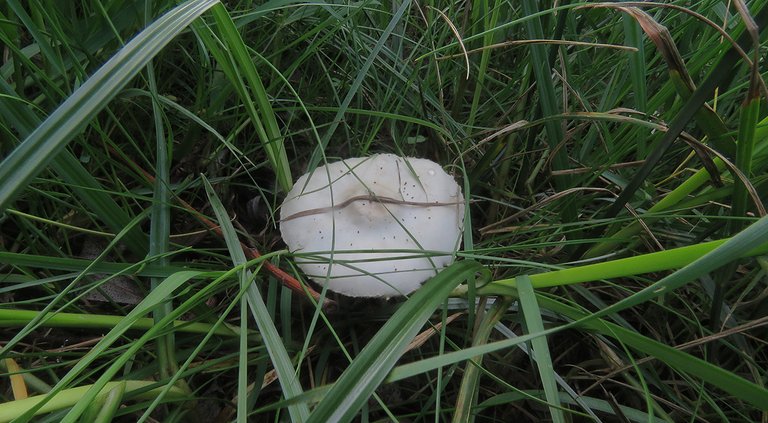
After some more walking around the meadow, I spotted something white in the grass.

It was a mushroom. I'm not sure about the species. It looks a bit like the Leucoagaricus leucothites. But is also a bit too gracile for that mushroom. So, I don't know. The deadly Amanita virosa also looks a bit like that.

Here you can take a look at the gills under the cap. Not far from there ...
... the dense, impenetrable growth of various intertwined shrubs and vines ...
... was decorated with clusters of beautiful red berries produced by the Smilax aspera plant.
Young shoots and leaves that appear in springtime are edible, but these colorful autumnal fruits are poisonous.

The Gibbaranea bituberculata spider shown in this photograph has built a web among the twigs of the shrubs.
Under the shrubs, I found a well-camouflaged pair of Pezotettix giornae grasshoppers.

A bit further, a meter or two from the wall of shrubs, I photographed this pretty big Locusta migratoria grasshopper.

This Colias croceus butterfly was feeding on the Knautia arvensis flower not far from there.

At one point, I stumbled upon a pile of construction waste. These things are quite usual here on the outskirts of Medulin. The last houses in the town aren't far, and some of them are under construction.
On the vegetation around that garbage, I found and photographed one single Pezotettix giornae grasshopper. Like in many other grasshoppers, the color and markings can vary inside the same species, so don't be confused by the slightly different appearance of this Pezotettix giornae.

This small mushroom was also found near the garbage. I'm not sure about the species but it looks a lot like the Conocybe tenera.
A bit later, on the way back to the car, I came across a few more mushrooms of the same kind.
The following links will take you to the sites with more information about some of the protagonists of this post. I found some stuff about them there.
https://en.wikipedia.org/wiki/Clinopodium_nepeta
https://en.wikipedia.org/wiki/Chrysolina_herbacea
https://champignouf.com/
https://en.wikipedia.org/wiki/Smilax_aspera
https://en.wikipedia.org/wiki/Gibbaranea_bituberculata
https://en.wikipedia.org/wiki/Pezotettix_giornae
https://en.wikipedia.org/wiki/Migratory_locust

